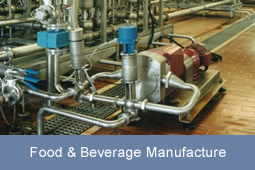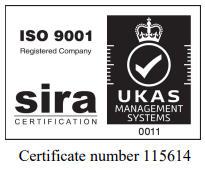Continuous measurement identifies poor water quality in real-time
Why is there more reliance on continuous water quality measurement in preference to taking discrete samples for water analysis?
Historically, discrete samples would be analysed periodically by an on-site laboratory or sent to a third party laboratory for analysis. However the delay in obtaining test results combined with issues of obtaining representative samples (the difficulty to always capture specific events) and sample integrity have influenced industry's approach.
The installation of on-line instrumentation to provide continuous water quality measurement has many advantages. Some of the simpler measurements such as pH and turbidity are relatively low cost but the benefits of obtaining continuous data to trend processes provides a more detailed understanding necessary for improvement to take place.
Continuous water quality monitoring systems notify the site of poor water quality events as they occur allowing for immediate corrective action to be taken. It is sometimes much more obvious to identify the cause of process failure in real-time than retrospectively investigate, especially if limited data is then available.
Suitability of water quality monitoring systems
The correct parameter and instrument selection is however critically important. Understanding the specific application requirements is one important consideration. An instrument designed for potable drinking water monitoring may not be appropriate for a waste water monitoring application where chemical and biological fouling would affect measurement reliability. Furthermore, how the instrumentation is installed may also be fundamentally important if a reliable water monitoring system is to be implemented.
Pollution and Process Monitoring Ltd, founded in 1990, have over 25 years experience providing continuous water monitoring systems to a wide range of industrial sectors including the Water Utilities. PPM has specialised in providing continuous water testing instrumentation for waste water applications and have also successfully applied the proven measurement technology to other applications where suspended solids and biological content may foul traditional sensors. Applications such as raw water monitoring which include intake protection for potable water production, surface water monitoring and water re-use all benefit from robust sensor technology, designed with automatic cleaning systems, to resists fouling.
Continuous water quality monitoring
Once a continuous monitoring system has been installed, the benefits are obvious. Where discrete sample have given a snap shot of concentration and water quality at any given time, the provision of continuous water quality measurement provides a detailed picture of events, minute by minute. This data allows scientists and engineers to identify in real-time, failing processes affecting water quality.
Instances where bottling plants have jammed causing product loss to drain can have a serious financial and environmental impact. Product may also be lost to surface water environments during transit across the site. Cleaning in place (CIP) may be incorrectly programmed, dumping neat product to drain. Spillage in the work place may be washed down (rather than absorbed and removed as a segregated waste product) if water monitoring systems are not in place.
The water quality monitoring system may comprise a simple sensor mounted directly into a tank or a drainage system. Conversely, depending upon the application, a more comprehensive approach may be required and comprise a range of analytical devices, integrated into a bespoke water quality monitoring system.
Pollution & Process Monitoring Ltd is a UK manufacturer of on-line water quality instrumentation. PPM manufactures the Protoc Total Organic Carbon analyser which is extensively used to continuously report effluent and surface water quality. The TOC result is often used as an indicator of Chemical Oxygen Demand.
Ammonia monitoring for water quality
PPM also manufactures the Proam ammonia monitor. Ammonia is a key parameter indicating the presence of untreated sewage and is extensively installed as a final effluent monitor for the Water Utilities. Another critical measurement is the detection of oil which has a serious impact if it reaches local water courses. Parameters such as pH, turbidity, dissolved oxygen and conductivity may also be integrated.
PPM specialises in the supply of engineered systems including pre-installation. The quality of the installation and subsequent maintenance is critically important. PPM can provide service agreements to ensure reliable operation.
More information? Get in touch!
If you would like more information relating to this product or the services Pollution PPM can provide, please Contact Us.
For International enquiries, please contact one of our dealers listed on the following page - International Dealers








